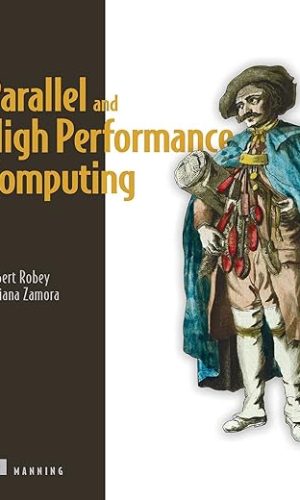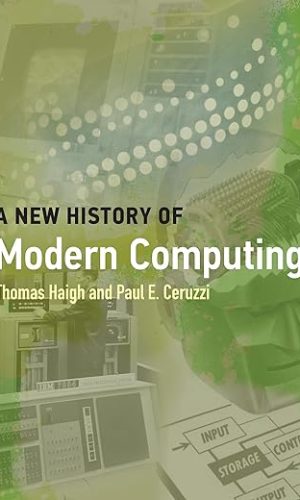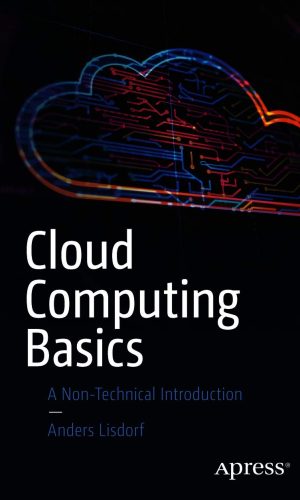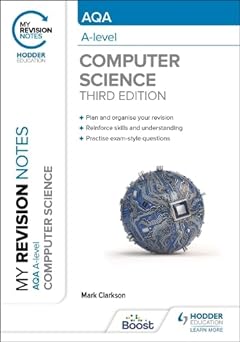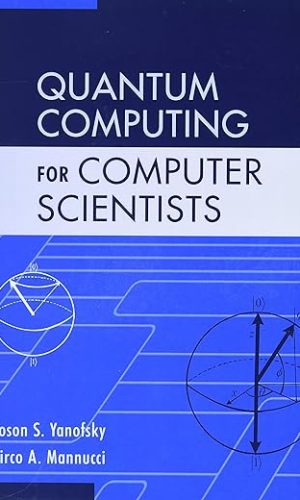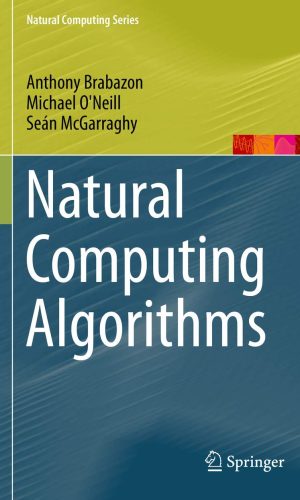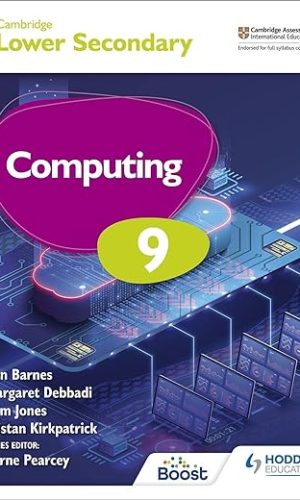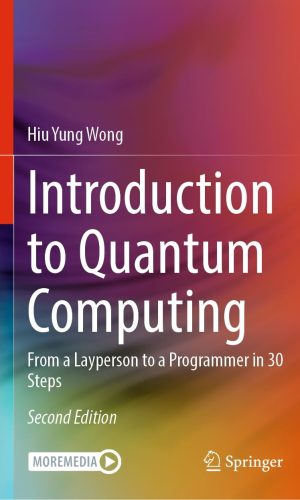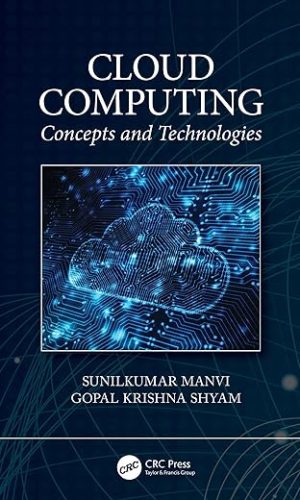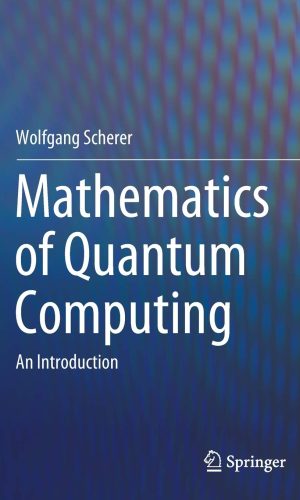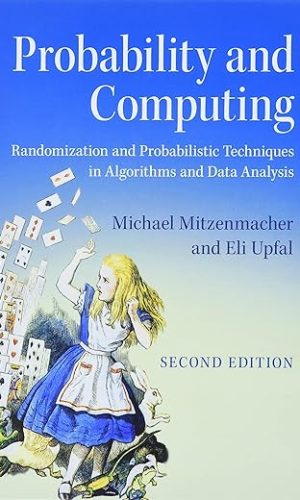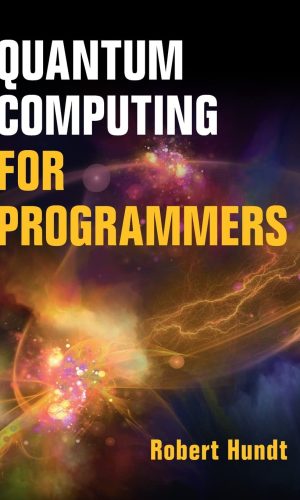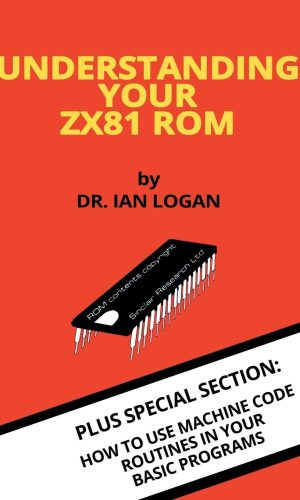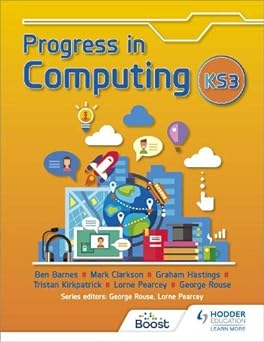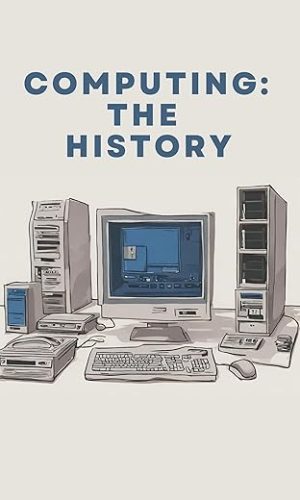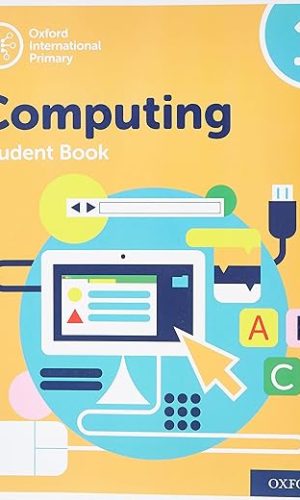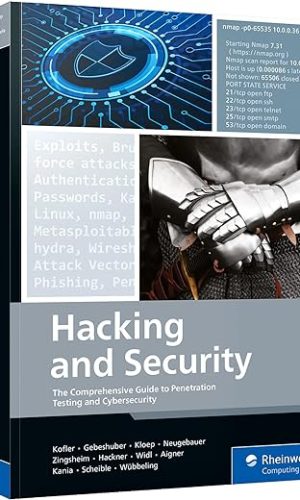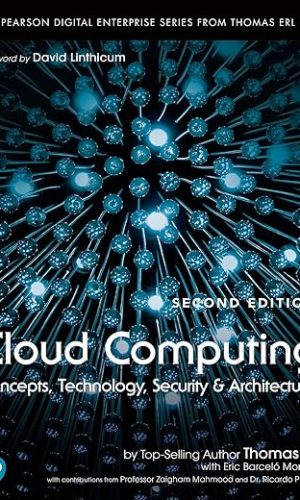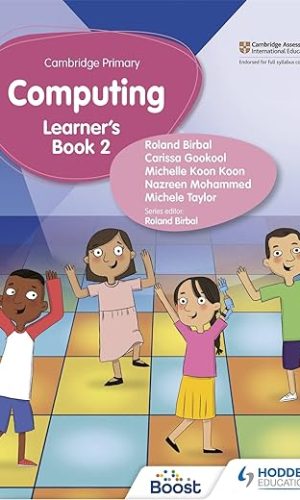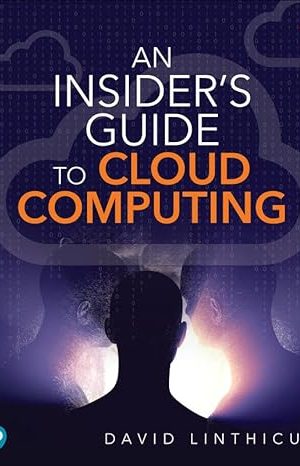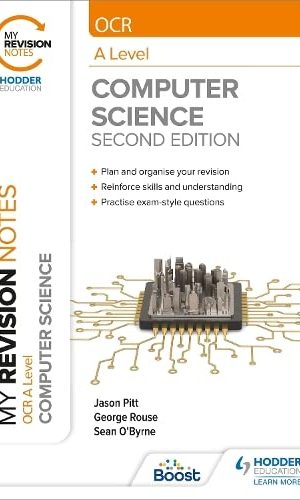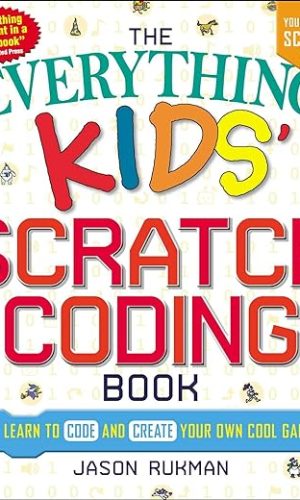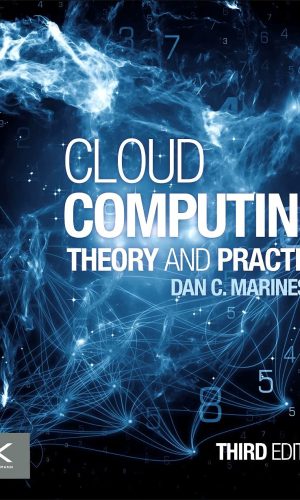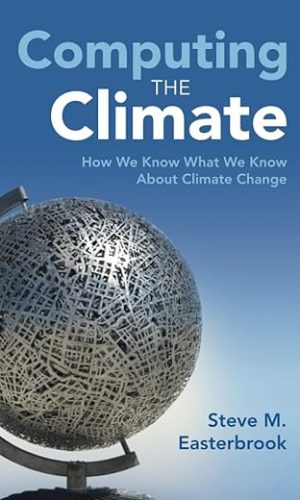Recommended Items
-
Beautician Accident Book: Health and Safety Incident Book for Home based Beauty or Salon Owners – Cosmeticians, Hairdressers, Beauticians, Masseuses etc.
A must have for recording any type of accident (big or small) in the workplace.
Helping to make sure you are health and safety compliant. Link books together for bookkeeping efficiency.
Each page allows you to form a detailed report including the following sections:
- Full name of the victim.
- Location of incident.
- Incident time & date and time it was reported.
- Type of person injured – Staff, visitor, member of public, contractor, other.
- Victim’s address, phone number and email address.
- Incident details – What happened?
- Injury details – “back injury”
- What action was taken? – First aid, hospital, ambulance, police, none, other.
- What could of been done to prevent this happening?
- People involved – Witness name & number (x2)
- Reported by – Name, signature & date. Approved by – Name, signature & date. Person involved – Name, signature & date.
- Other important information or notes.
As you can see from the above sections, this report is very detailed. This will help to eliminate grey areas and inconsistencies, resulting in less stress for you.
Read more
£5.70 -
Emma’s Examination: A Victorian Medical Erotica Short Story (The Wanton Debutante Book 1)
Eighteen-year-old Emma Gilton has joined the ranks of debutantes, only to discover its immense tedium. When she is found with her bloomers around her ankles, engaging in the solitary vice, Lord Gilton is at his wit’s end. That is, until Dr Davenport, who specialises in cases of wanton young ladies, offers to treat her.
Emma poses a vexing challenge for Dr Davenport, who, with his characteristic diligence, disciplines and examines her before applying his rigorous treatment.
This is a historical, Victorian erotic short of 5250 words. This story contains scenes of medical erotica and light BDSM.
Contains explicit material, suitable for mature audiences (18+) only.
Read more
£1.10 -
London College of Music Electric Guitar Grade 1
This book is part of a series that forms an expertly structured and comprehensive method of studying electric guitar. The book covers all the material needed for an LCM examination in Electric Guitar, enabling you to study for an internationally recognised qualification. However, even if you do not intend to take an exam, this book will help you achieve your full potential as a guitarist by developing all aspects of your playing in a structured way.Read more
£8.10 -
100 Ideas for Secondary Teachers: Outstanding Music Department
The 100 Ideas for Teachers series offers early years, primary and secondary practitioners/teachers quick and practical ideas, tips, advice and/or activities to improve specific areas of their teaching in an accessible, dip in and out format. In making this relevant for a Secondary Music Department, My-Hanh Doan and Dave Guinane have focussed on four main areas: the classroom, extra-curricular activities, the department and the wider school. Their ideas cover Key Stage 3 to A-level, and cover areas from behaviour, homework, kick-starting orchestras through to ensembles, trips and tours, social media strategies and much more. An invaluable resource for every secondary teacher.Read more
£13.30 -
Sea Fever: A Seaside Companion: from buoys and bowlines to selkies and setting sail
‘What a fun book! Reading Sea Fever is enticing and intriguing, like watching floating treasure bob past your nose.’ Tristan Gooley, author of The Natural Navigator
Can you interpret the shipping forecast? Do you know your flotsam from your jetsam? Or who owns the foreshore? Can you tie a half-hitch – or would you rather splice the mainbrace?
Full of charming illustrations and surprising facts, Sea Fever provides the answers to all these and more. Mixing advice on everything from seasickness to righting a capsized boat with arcane marine lore, recipes, history, dramatic stories of daring-do and guides to the wildlife we share our shores with, even the most experienced ocean-dweller will find something in these pages to surprise and delight.
Read more
£8.70£9.50 -
SEO FOR GOOGLE 2021: All the Search Engine Optimization (SEO) Tips that Google Does not Want You to Know (Digital Key Series Book 1)
Are you tired of search engine optimization (SEO) books that teach you nothing?In this book, you can learn all the practical search engine optimization (SEO) secrets and tips that Googledoes not want you to know. It is focused on Google, although it is also valid for other search engines suchas Bing, Yahoo or Yandex. Reading this book you will learn the general strategy, the keyword strategyand the importance of some previous steps to be able to compete successfully for the search engineresult pages (SERP). You will get good advice on how to optimize the structural factors that contribute tothe positioning of a page, which are those related to the domain or the website as a whole. And you’ll alsoget tips for optimizing the internal optimization factors (on-page SEO) and of course tips on externalfactors (off-page SEO), link generation (link building) and mazimizing the impact of social networks insearch engine optimization (SEO). You will learn to master concepts such as Pagerank, TrustRank,BadRank and RankBrain, the latter related to usability and user experience, which are increasinglyimportant. The author tells -almost- everything he knows, the result of his innovative doctoral (PhD) thesison Google and more than a decade of experience and observation of the search engine, as president ofa consulting firm specialized in search engine optimization (SEO), Top Position, founded in 2008.Is the name of a domain still important to Google?How to undertake an efficient keyword study?What is the optimal density of text on a web page?What is PagerRank? And BadRank? How to correctly generate quality inbound links?How important are social networks in search engine optimization? Which are the most relevant?What is RankBrain? How important is user experience and usability for Google?Here you will find the answer to these and other questions!Read more
£3.00 -
The Earl’s Unwanted Bride: A Historical Regency Romance Novel (The Unwanted Wives Book 2)
“Are you scared I will ruin you? Or that you will like it?”Mary-Jane must choose between marrying her late husband’s cruel cousin or she and her daughter living on the streets. But then, the worst rake of the ton offers her a deal she can’t refuse: a marriage in name only.
The Earl of Lindburg had vowed to never marry, or fall in love. Yet, the desire Harrison feels for his new bride is enough to break his own rules.
She is his weakness…and his only exception. Will he be able to resist her?
*If you like a realistic yet steamy depiction of the Regency and Victorian era, then The Earl’s Unwanted Bride is the novel for you.
An enchanting regency romance of 80,000 words (around 400 pages), written by Daphne Byrne and published by Cobalt Fairy.
No cheating, no cliffhangers, and a strong happily ever after.
Get “The Earl’s Unwanted Bride” today to discover Daphne’s splendid new story!
Read more
£0.80
-
Parallel and High Performance Computing
Complex calculations, like training deep learning models or running large-scale simulations, can take an extremely long time. Efficient parallel programming can save hours―or even days―of computing time. Parallel and High Performance Computing shows you how to deliver faster run-times, greater scalability, and increased energy efficiency to your programs by mastering parallel techniques for multicore processor and GPU hardware.about the technology
Modern computing hardware comes equipped with multicore CPUs and GPUs that can process numerous instruction sets simultaneously. Parallel computing takes advantage of this now-standard computer architecture to execute multiple operations at the same time, offering the potential for applications that run faster, are more energy efficient, and can be scaled to tackle problems that demand large computational capabilities. But to get these benefits, you must change the way you design and write software. Taking advantage of the tools, algorithms, and design patterns created specifically for parallel processing is essential to creating top performing applications.
about the book
Parallel and High Performance Computing is an irreplaceable guide for anyone who needs to maximize application performance and reduce execution time. Parallel computing experts Robert Robey and Yuliana Zamora take a fundamental approach to parallel programming, providing novice practitioners the skills needed to tackle any high-performance computing project with modern CPU and GPU hardware. Get under the hood of parallel computing architecture and learn to evaluate hardware performance, scale up your resources to tackle larger problem sizes, and deliver a level of energy efficiency that makes high performance possible on hand-held devices. When you’re done, you’ll be able to build parallel programs that are reliable, robust, and require minimal code maintenance.
This book is unique in its breadth, with discussions of parallel algorithms, techniques to successfully develop parallel programs, and wide coverage of the most effective languages for the CPU and GPU. The programming paradigms include MPI, OpenMP threading, and vectorization for the CPU. For the GPU, the book covers OpenMP and OpenACC directive-based approaches and the native-based CUDA and OpenCL languages.
what’s inside
- Steps for planning a new parallel project
- Choosing the right data structures and algorithms
- Addressing underperforming kernels and loops
- The differences in CPU and GPU architecture
about the reader
For experienced programmers with proficiency in a high performance computing language such as C, C++, or Fortran.
about the authors
Robert Robey has been active in the field of parallel computing for over 30 years. He works at Los Alamos National Laboratory, and has previously worked at the University of New Mexico, where he started up the Albuquerque High Performance Computing Center. Yuliana Zamora has lectured on efficient programming of modern hardware at national conferences, based on her work developing applications running on tens of thousands of processing cores and the latest GPU architectures.
Read more
£47.00£53.20Parallel and High Performance Computing
£47.00£53.20 -
A New History of Modern Computing (History of Computing)
How the computer became universal.Over the past fifty years, the computer has been transformed from a hulking scientific supertool and data processing workhorse, remote from the experiences of ordinary people, to a diverse family of devices that billions rely on to play games, shop, stream music and movies, communicate, and count their steps. In A New History of Modern Computing, Thomas Haigh and Paul Ceruzzi trace these changes. A comprehensive reimagining of Ceruzzi’s A History of Modern Computing, this new volume uses each chapter to recount one such transformation, describing how a particular community of users and producers remade the computer into something new.
Haigh and Ceruzzi ground their accounts of these computing revolutions in the longer and deeper history of computing technology. They begin with the story of the 1945 ENIAC computer, which introduced the vocabulary of “programs” and “programming,” and proceed through email, pocket calculators, personal computers, the World Wide Web, videogames, smart phones, and our current world of computers everywhere–in phones, cars, appliances, watches, and more. Finally, they consider the Tesla Model S as an object that simultaneously embodies many strands of computing.
Read more
£21.80 -
Cloud Computing Basics: A Non-Technical Introduction
Regardless of where your organization is in your cloud journey, moving to the cloud is an inevitability in the coming years. The cloud is here to stay, and now is the best time to identify optimal strategies to harness the benefits and mitigate the risks. Cloud Computing Basics is the practical, accessible entry point you have been seeking.
Get an introduction to the basics of cloud computing and all five major cloud platforms. Author Anders Lisdorf ensures that you gain a fundamental cloud vocabulary and learn how to translate industry terms used by different vendors. Leveraging the economic and security benefits that the cloud provides can look very different for each organization, and Lisdorf uses his expertise to help you adapt your strategy accordingly.
Cloud Computing Basics is here to bring your organization into the future. Whether you are a beginner on the topic or a tech leader kick-starting change within your company, this book provides essential insights for cloud adoption and its benefits for our modern digital era. Do not get left behind, and add Cloud Computing Basics to your tech bookshelf today.What You Will Learn
- Understand what the cloud is and how it differs from traditional on-premise solutions
- Gain a fundamental cloud vocabulary and learn how to translate between it and the terms used by different vendors
- Know the main components of the cloud and how they are used
- Be aware of the vendors in the cloud market, their strengths and weaknesses, and what to expect from them
- Tailor the optimal cloud solution to the organizational context
- Study different approaches to cloud adoption and the contexts in which they are suitable so you can determine how your organization will get the most benefit from the cloud
Who This Book Is For
A general business audience that wants to catch up on the basics of cloud computing in order to have informed conversations with technical professionals and vendors. The book is for anyone interested in a deeper understanding of what the cloud is, where it came from, and how it will impact every organization in the future. A basic understanding of information technology helps, but is not required.
Read more
£19.00 -
Quantum Computing & Some Physics: The Quantum Computing Comics Notebook
Learn about quantum computing through an intuitive series of comics. It is both a book and a notebook, in which readers can note down their thoughts on the back of the comics. The book provides a high-level guide to the basic concepts of quantum computing, linear algebra, and quantum algorithms. Commonly used quantum hardware architectures are also described in the comics. Learners at any age with any background can get something out of the comics. The comics are a popular visualization from Dr. Kitty Yeung’s HackadayU online quantum computing class: https://hackaday.io/project/168554-quantum-computing-through-comics
**About the author**
Dr. Kitty Yeung was a Sr. Quantum Architect at Microsoft Quantum Systems before she founded the company’s fashion technology incubation. She has been named an influential figure driving the quantum technology revolution by research firm Quantum Zeitgeist. Kitty also runs her independent designer STEAM and sustainable fashion brand, Art by Physicist. She was the Producer of MS Learn quantum modules; Creator of comic series Quantum Computing through Comics; Lecturer at HackadayU and Microsoft Reactor on Introduction to Quantum Computing. She does public speaking on quantum computing and fashion tech. She obtained her PhD from Harvard University 15′ Applied Physics and B.A., M.Sci. and M.A from University of Cambridge 10′ Natural Sciences – Physical.Read more
£16.00 -
My Revision Notes: AQA A level Computer Science
Set your students on track to achieve the best grade possible with My Revision Notes: AQA A-level Computer Science.
Our clear and concise approach to revision will help students learn, practise and apply their skills and understanding. Coverage of key content is combined with practical study tips and effective revision strategies to create a guide that can be relied on to build both knowledge and confidence.
With My Revision Notes: AQA A-level Computer Science, students can:
> Consolidate knowledge with clear, focused and relevant content coverage, based on what examiners are looking for
> Develop understanding with self-testing – our regular ‘Now test yourself,’ tasks and answers will help commit knowledge to memory
> Improve technique through exam-style practice questions, expert tips and examples of typical mistakes to avoid
> Identify key connections between topics and subjects with our ‘Learning links’ focus
> Plan and manage a successful revision programme with our topic-by-topic planner, new exam breakdown feature, user-friendly definitions throughout and questions and answers onlineRead more
£18.00 -
Quantum Computing & Artificial Intelligence – The Perfect Match? : A Brief Overview for Beginners (Arificial Intelligence Book 8)
Get prepared for the Future!A short read on how quantum computing can boost artificial intelligence.
About the Author
Murat Durmus is CEO and founder of AISOMA (a Frankfurt am Main (Germany) based company specializing in AI-based technology development and consulting) and Author of the books “Mindful AI – Reflections on Artificial Intelligence” and “A Primer to the 42 Most commonly used Machine Learning Algorithms (With Code Samples).”Contents:
- PREFACE
- Do we need Quantum support in Artificial Intelligence (AI)?
- What is AI?
- What is Quantum-Assisted AI?
- Applications and Challenges
- What can Quantum-Assisted AI be used for?
- Quantum Assisted Optimization
- Quantum-assisted AI for material analysis.
- Smart Cities and Transportation
- Current Problems and Challenges
- Explainability and Certification for Quantum AI
- Uncertainty of the Calculation units
- MAIN CHALLENGES THROUGH QUANTUM COMPUTING
- Access to Information
- Standards
- Use of the Knowledge gained from Quantum Computers
- THE POTENTIAL IMPACT OF QUANTUM COMPUTING ON CRITICAL SECTORS
- Information and Communications Technology
- Chemical Engineering
- Pharmaceuticals
- Quantitative Finance
- Aerospace
- Automotive Industry
- Climate change modeling
- Advanced materials
- The Quantum Future
- DEFINITIONS OF TERMS IN QUANTUM SCIENCE
- MILESTONES IN QUANTUM COMPUTING
- The 2020s
- 2021
- 2022
Read more
£1.60 -
Quantum Computing for Computer Scientists
The multidisciplinary field of quantum computing strives to exploit some of the uncanny aspects of quantum mechanics to expand our computational horizons. Quantum Computing for Computer Scientists takes readers on a tour of this fascinating area of cutting-edge research. Written in an accessible yet rigorous fashion, this book employs ideas and techniques familiar to every student of computer science. The reader is not expected to have any advanced mathematics or physics background. After presenting the necessary prerequisites, the material is organized to look at different aspects of quantum computing from the specific standpoint of computer science. There are chapters on computer architecture, algorithms, programming languages, theoretical computer science, cryptography, information theory, and hardware. The text has step-by-step examples, more than two hundred exercises with solutions, and programming drills that bring the ideas of quantum computing alive for today’s computer science students and researchers.Read more
£60.00£62.70Quantum Computing for Computer Scientists
£60.00£62.70 -
Natural Computing Algorithms (Natural Computing Series)
The field of natural computing has been the focus of a substantial research effort in recent decades. One particular strand of this research concerns the development of computational algorithms using metaphorical inspiration from systems and phenomena that occur in the natural world. These naturally inspired computing algorithms have proven to be successful problem-solvers across domains as diverse as management science, bioinformatics, finance, marketing, engineering, architecture and design.
This book is a comprehensive introduction to natural computing algorithms, suitable for academic and industrial researchers and for undergraduate and graduate courses on natural computing in computer science, engineering and management science.
Read more
£45.30£52.20 -
Financial Modeling Using Quantum Computing: Design and manage quantum machine learning solutions for financial analysis and decision making
Elevate your problem-solving prowess by using cutting-edge quantum machine learning algorithms in the financial domain
Purchase of the print or Kindle book includes a free PDF eBook
Key Features
- Learn to solve financial analysis problems by harnessing quantum power
- Unlock the benefits of quantum machine learning and its potential to solve problems
- Train QML to solve portfolio optimization and risk analytics problems
Book Description
Quantum computing has the potential to revolutionize the computing paradigm. By integrating quantum algorithms with artificial intelligence and machine learning, we can harness the power of qubits to deliver comprehensive and optimized solutions for intricate financial problems.
This book offers step-by-step guidance on using various quantum algorithm frameworks within a Python environment, enabling you to tackle business challenges in finance. With the use of contrasting solutions from well-known Python libraries with quantum algorithms, you’ll discover the advantages of the quantum approach. Focusing on clarity, the authors expertly present complex quantum algorithms in a straightforward, yet comprehensive way. Throughout the book, you’ll become adept at working with simple programs illustrating quantum computing principles. Gradually, you’ll progress to more sophisticated programs and algorithms that harness the full power of quantum computing.
By the end of this book, you’ll be able to design, implement and run your own quantum computing programs to turbocharge your financial modelling.
What you will learn
- Examine quantum computing frameworks, models, and techniques
- Get to grips with QC’s impact on financial modelling and simulations
- Utilize Qiskit and Pennylane for financial analyses
- Employ renowned NISQ algorithms in model building
- Discover best practices for QML algorithm
- Solve data mining issues with QML algorithms
Who this book is for
This book is for financial practitioners, quantitative analysts, or developers; looking to bring the power of quantum computing to their organizations. This is an essential resource written for finance professionals, who want to harness the power of quantum computers for solving real-world financial problems. A basic understanding of Python, calculus, linear algebra, and quantum computing is a prerequisite.
Table of Contents
- Quantum Computing Paradigm
- Quantum Machine Learning Algorithms
- Quantum Finance Landscape
- Derivatives Valuation
- Portfolio Valuations
- Credit Risk Analytics
- Implementation in Quantum Clouds
- HPCs and Simulators Relevance
- NISQ Quantum Hardware Evolution
- Quantum Roadmap for Banks and Fintechs
Read more
£32.30 -
Cambridge Lower Secondary Computing 9 Student’s Book
This title has been endorsed by Cambridge Assessment International Education.
Deliver an exciting computing course for ages 11-14, building on students’ existing computing skills and experience whilst demonstrating new concepts, with practice opportunities to ensure progression.
– Recap and activate students’ prior knowledge with ‘Do you remember?’ panels and introduce more advanced skills with ‘Challenge yourself!’ tasks.
– Allow students to demonstrate their knowledge creatively with engaging end of unit projects that apply skills and concepts in a range of different contexts.
– Develop computational thinking with an emphasis on broadening understanding throughout the activities.
– Provide clear guidance on e-safety with a strong focus throughout.Contents
Introduction
1 Presenting choices: combining constructs
2 Design your own network: shape and size
3 Coding and testing: game development for the Micro:bit
4 Drilling down: How the processor processes
5 Big data modelling and analysis: databases and spreadsheets
6 An array of skills: expert storytelling
Glossary
IndexRead more
£20.90 -
The science of AI
“The science of AI: Exploring the Depths of Artificial Intelligence”
Delve into the intricacies of Artificial Intelligence (AI) and Deep Learning through this comprehensive journey that illuminates the core facets shaping our technological landscape. From its historical genesis to futuristic horizons, this book is a compelling guide that navigates the vast terrain of AI with unparalleled depth and insight.
Unveiling the Evolution:
Embark on a historical odyssey through the milestones and evolutionary arcs in AI development. Trace the fascinating journey from its nascent stages to groundbreaking milestones, uncovering the pivotal moments that have sculpted the realm of intelligent machines.
Foundations of AI Unraveled:
Explore the fundamental pillars of AI and Deep Learning in Chapter 1, diving into machine learning essentials, neural networks, and their transformative applications. This section serves as a gateway, unraveling the mysteries behind AI’s incredible capabilities in diverse domains.
Underlying Principles and Advanced Techniques:
Chapter 2 delves into the intricate mathematical foundations underpinning AI, from linear algebra to optimization algorithms. Experience an in-depth exploration of neural network architectures, advanced techniques like GANs and reinforcement learning, illuminating the mechanisms behind AI’s cognitive prowess.
Real-world Applications and Ethical Contours:
Discover the real-world impact of AI in Chapter 3, where diverse applications in healthcare, finance, robotics, and cybersecurity are vividly portrayed. Simultaneously, confront the ethical considerations in Chapter 4, addressing biases, fairness, and governance in AI development.
Human vs. Machine:
Chapter 5 sparks the discourse on comparative intelligence, contrasting human thought processes with machine movements. Uncover the hybrid AI approaches forging new paths in problem-solving methodologies.
Current Trends and Future Frontiers:
Chapter 6 unveils the current trends and future trajectories of AI, from scaling models to emerging directions in AI algorithms, sustainability, and quantum computing fusion, offering a tantalizing glimpse into the uncharted territories.
Expert Insights and Continuous Learning:
Engage with leading researchers’ perspectives in Chapter 7, gaining insights into ongoing research, future predictions, and emerging horizons that push the boundaries of AI’s capabilities.
Interactive Learning and References:
Chapter 8 fosters an immersive learning experience through interactive elements and a wealth of references, empowering continual learning and exploration in the fascinating world of AI and deep learning.
Join the Journey:
Whether you’re an enthusiast seeking a profound understanding of AI’s intricacies or a practitioner navigating the forefront of technology, ‘The Artistry of AI’ is your indispensable guide to unraveling the mysteries and potentials of Artificial Intelligence.Read more
£6.10The science of AI
£6.10 -
Quantum Computing (Second Edition): A pathway to quantum logic design (IOP ebooks)
Quantum computing is an emerging technology with the potential to have a significant impact on science and technology. Organised into four parts, this comprehensive second edition covers topics such as the basic concepts of quantum computing alongside quantum implementation of different circuits; the fault tolerant concepts of quantum computing; the concept of QCA alongside the design processes of different QCA circuits; and an overview of QCA fault-tolerant circuits and their design procedures. In addition to updates to first edition chapters to reflect developments in recent years, this new edition sees the inclusion of problems to every chapter and eight new chapters. This book will be a great help for quantum computing researchers, faculty members and students who can develop a working understanding of circuit-based quantum computing.
Key Features
- Contains eight new chapters as a significantly extended new edition
- Encompasses developments in the area, with a special focus on quantum cellular automata
- Is suitable as a supplementary text in advanced courses
- Includes problems within every chapter
Read more
£82.10£114.00 -
Introduction to Quantum Computing: From a Layperson to a Programmer in 30 Steps
This textbook introduces quantum computing to readers who do not have much background in linear algebra based on the self-study experience of the author as an engineer. The author targets undergraduate and master students who are willing to spend about 60 -90 hours seriously learning quantum computing. This book is also suitable for self-study and teaching videos for each chapter and more than 200 exercises with answers are provided. Readers will be able to write their program to simulate quantum computing algorithms and run on real quantum computers on IBM-Q. Moreover, unlike books that only give superficial, “hand-waving” explanations, this book uses exact formalism so readers can continue to pursue more advanced topics based on what they learn from this bookRead more
£31.30 -
Cloud Computing: Concepts and Technologies
Comprehensive and timely, Cloud Computing: Concepts and Technologies offers a thorough and detailed description of cloud computing concepts, architectures, and technologies, along with guidance on the best ways to understand and implement them. It covers the multi-core architectures, distributed and parallel computing models, virtualization, cloud developments, workload and Service-Level-Agreements (SLA) in cloud, workload management. Further, resource management issues in cloud with regard to resource provisioning, resource allocation, resource mapping and resource adaptation, ethical, non-ethical and security issues in cloud are followed by discussion of open challenges and future directions.
This book gives students a comprehensive overview of the latest technologies and guidance on cloud computing, and is ideal for those studying the subject in specific modules or advanced courses. It is designed in twelve chapters followed by laboratory setups and experiments. Each chapter has multiple choice questions with answers, as well as review questions and critical thinking questions. The chapters are practically-focused, meaning that the information will also be relevant and useful for professionals wanting an overview of the topic.
Read more
£28.90 -
Lessons in Teaching Computing in Primary Schools
Whether you are currently teaching or training to teach the primary computing curriculum, you need to know what effective teaching of computing in primary schools actually looks like. Written for non specialists and trainees, this book uses exemplar primary computing lessons as a starting point for developing subject knowledge. It′s a unique but tried and tested approach to developing your computing subject knowledge alongside your teaching practice.The current computing curriculum is explored in manageable chunks and there is no “scary” tech speak; everything is explained clearly and accessibly. You will find example lesson plans alongside every element of the curriculum that can be adapted to suit different year groups and different schools. This resourceful guide inspires an approach to teaching computing that is about creativity and encouraging problem solving using technology as a tool.
NEW TO THIS EDITION: Updated throughout and includes information on new apps and other resources for teaching and a brand new chapter on teaching with tablets in the primary classroom.
This book is part of the Lessons in Teaching series and includes additional online resources on its accompanying website.
Read more
£19.90£24.70Lessons in Teaching Computing in Primary Schools
£19.90£24.70 -
Mathematics of Quantum Computing: An Introduction
This textbook presents the elementary aspects of quantum computing in a mathematical form. It is intended as core or supplementary reading for physicists, mathematicians, and computer scientists taking a first course on quantum computing. It starts by introducing the basic mathematics required for quantum mechanics, and then goes on to present, in detail, the notions of quantum mechanics, entanglement, quantum gates, and quantum algorithms, of which Shor’s factorisation and Grover’s search algorithm are discussed extensively. In addition, the algorithms for the Abelian Hidden Subgroup and Discrete Logarithm problems are presented and the latter is used to show how the Bitcoin digital signature may be compromised. It also addresses the problem of error correction as well as giving a detailed exposition of adiabatic quantum computing. The book contains around 140 exercises for the student, covering all of the topics treated, together with an appendix of solutions.
Read more
£63.70£66.50Mathematics of Quantum Computing: An Introduction
£63.70£66.50 -
Quantum Machine Learning: Thinking and Exploration in Neural Network Models for Quantum Science and Quantum Computing (Quantum Science and Technology)
This book presents a new way of thinking about quantum mechanics and machine learning by merging the two. Quantum mechanics and machine learning may seem theoretically disparate, but their link becomes clear through the density matrix operator which can be readily approximated by neural network models, permitting a formulation of quantum physics in which physical observables can be computed via neural networks. As well as demonstrating the natural affinity of quantum physics and machine learning, this viewpoint opens rich possibilities in terms of computation, efficient hardware, and scalability. One can also obtain trainable models to optimize applications and fine-tune theories, such as approximation of the ground state in many body systems, and boosting quantum circuits’ performance. The book begins with the introduction of programming tools and basic concepts of machine learning, with necessary background material from quantum mechanics and quantum information also provided. This enables the basic building blocks, neural network models for vacuum states, to be introduced. The highlights that follow include: non-classical state representations, with squeezers and beam splitters used to implement the primary layers for quantum computing; boson sampling with neural network models; an overview of available quantum computing platforms, their models, and their programming; and neural network models as a variational ansatz for many-body Hamiltonian ground states with applications to Ising machines and solitons. The book emphasizes coding, with many open source examples in Python and TensorFlow, while MATLAB and Mathematica routines clarify and validate proofs. This book is essential reading for graduate students and researchers who want to develop both the requisite physics and coding knowledge to understand the rich interplay of quantum mechanics and machine learning.Read more
£99.30 -
Learning Microsoft Azure: Cloud Computing and Development Fundamentals
If your organization plans to modernize services and move to the cloud from legacy software or a private cloud on premises, this book is for you. Software developers, solution architects, cloud engineers, and anybody interested in cloud technologies will learn fundamental concepts for cloud computing, migration, transformation, and development using Microsoft Azure.
Author and Microsoft MVP Jonah Carrio Andersson guides you through cloud computing concepts and deployment models, the wide range of modern cloud technologies, application development with Azure, team collaboration services, security services, and cloud migration options in Microsoft Azure.
You’ll gain insight into the Microsoft Azure cloud services that you can apply in different business use cases, software development projects, and modern solutions in the cloud. You’ll also become fluent with Azure cloud migration services, serverless computing technologies that help your development team work productively, Azure IoT, and Azure cognitive services that make your application smarter. This book also provides real-world advice and best practices based on the author’s own Azure migration experience.
- Gain insight into which Azure cloud service best suits your company’s particular needs
- Understand how to use Azure for different use cases and specific technical requirements
- Start developing cloud services, applications, and solutions in the Azure environment
- Learn how to migrate existing legacy applications to Microsoft Azure
Read more
£40.20£50.30 -
Probability and Computing: Randomization and Probabilistic Techniques in Algorithms and Data Analysis
Greatly expanded, this new edition requires only an elementary background in discrete mathematics and offers a comprehensive introduction to the role of randomization and probabilistic techniques in modern computer science. Newly added chapters and sections cover topics including normal distributions, sample complexity, VC dimension, Rademacher complexity, power laws and related distributions, cuckoo hashing, and the Lovasz Local Lemma. Material relevant to machine learning and big data analysis enables students to learn modern techniques and applications. Among the many new exercises and examples are programming-related exercises that provide students with excellent training in solving relevant problems. This book provides an indispensable teaching tool to accompany a one- or two-semester course for advanced undergraduate students in computer science and applied mathematics.Read more
£39.70£45.60 -
Introduction to Probability for Computing
Learn about probability as it is used in computer science with this rigorous, yet highly accessible, undergraduate textbook. Fundamental probability concepts are explained in depth, prerequisite mathematics is summarized, and a wide range of computer science applications is described. Throughout, the material is presented in a “question and answer” style designed to encourage student engagement and understanding. Replete with almost 400 exercises, real-world computer science examples, and covering a wide range of topics from simulation with computer science workloads, to statistical inference, to randomized algorithms, to Markov models and queues, this interactive text is an invaluable learning tool whether your course covers probability with statistics, with stochastic processes, with randomized algorithms, or with simulation. The teaching package includes solutions, lecture slides, and lecture notes for students.Read more
£45.10 -
Quantum Computing by Practice: Python Programming in the Cloud with Qiskit and IBM-Q
Learn to write algorithms and program in the new field of quantum computing. This second edition is updated to equip you with the latest knowledge and tools needed to be a complex problem-solver in this ever-evolving landscape. The book has expanded its coverage of current and future advancements and investments by IT companies in this emerging technology. Most chapters are thoroughly revised to incorporate the latest updates to IBM Quantum’s systems and offerings, such as improved algorithms, integrating hardware advancements, software enhancements, bug fixes, and more.
You’ll examine quantum computing in the cloud and run experiments there on a real quantum device. Along the way you’ll cover game theory with the Magic Square, an example of quantum pseudo-telepathy. You’ll also learn to write code using QISKit, Python SDK, and other APIs such as QASM and execute it against simulators (local or remote) or a real quantum computer. Then peek inside the inner workings of the Bell states for entanglement, Grover’s algorithm for linear search, Shor’s algorithm for integer factorization, and other algorithms in the fields of optimization, and more. Finally, you’ll learn the current quantum algorithms for entanglement, random number generation, linear search, integer factorization, and others.
By the end of this book, you’ll understand how quantum computing provides massive parallelism and significant computational speedups over classical computers
What You’ll Learn
- Write algorithms that provide superior performance over their classical counterparts
- Create a quantum number generator: the quintessential coin flip with a quantum twist
- Examine the quantum algorithms in use today for random number generation, linear search, and more
- Discover quantum teleportation
- Handle the counterfeit coin problem, a classic puzzle
- Put your knowledge to the test with more than 150 practice exercises
Who This Book Is For
Developers, programmers, computer science researchers, teachers, and students.
Read more
£38.00 -
Quantum Computing for Programmers
This introduction to quantum computing from a classical programmer’s perspective is meant for students and practitioners alike. Over 25 fundamental algorithms are explained with full mathematical derivations and classical code for simulation, using an open-source code base developed from the ground up in Python and C++. After presenting the basics of quantum computing, the author focuses on algorithms and the infrastructure to simulate them efficiently, beginning with quantum teleportation, superdense coding, and Deutsch-Jozsa. Coverage of advanced algorithms includes the quantum supremacy experiment, quantum Fourier transform, phase estimation, Shor’s algorithm, Grover’s algorithm with derivatives, quantum random walks, and the Solovay–Kitaev algorithm for gate approximation. Quantum simulation is explored with the variational quantum eigensolver, quantum approximate optimization, and the Max-Cut and Subset-Sum algorithms. The book also discusses issues around programmer productivity, quantum noise, error correction, and challenges for quantum programming languages, compilers, and tools, with a final section on compiler techniques for transpilation.Read more
£47.40 -
Higher Computing Science New Edition: Revise and learn (Bright Red Study Guides)
Get exam ready with our new edition Higher Computing Science Study Guide!
Fully up-to-date with the latest course changes, this guide covers a wide range of topics to help build your knowledge and equip you with the tools needed to succeed at Higher. In this Study Guide, you will find:- Clear and concise course coverage and exam advice
- Activities and content that will introduce you to an advanced range of computational process across a variety of contemporary contexts.
- Don’t Forget pointers that offer advice on key facts and how to avoid common mistakes.
- Things to Do and Think About sections which provide you with plenty of opportunities to put your knowledge into practice.
This guide is also supported by a host of free additional material available on the BrightRED Digital Zone!
Contents:
- Software Design and Development
- Information System Design and Development
- Course Assessment and Value Added Unit
- Answers
- Index
Read more
£10.70 -
Understanding Your ZX81 ROM (28) (Retro Reproductions)
Launched in 1981, Sir Clive Sinclair’s ZX81 – successor to his ZX80 released the year before – was designed to be a low-cost introduction to home computing for the general public. It was a hugely successful machine, with over one and a half million ‘official’ units being sold; many more unauthorised ‘clones’ were also produced, particularly in Russia and other Eastern Bloc countries of the era. One could either purchase the machine pre-built, or – as a significant number of consumers did – buy it in kit form for assembly at home at a slightly cheaper price. This ‘DIY’ approach, encouraged by Sinclair Research, became a core element of the computer’s genetic make-up. Those who were comfortable putting together the four silicon chips and other such components were just as keen to poke around the machine’s memory, learning as much as they could about its capability; the programs they would write could easily be shared once saved onto a standard audio cassette.
This book helps the reader truly understand how the ZX81 works, with sections covering everything from the structure of the Z80 microprocessor used in the machine to the computer’s registers, ALU and more.
With an introduction to both binary and hex, Understanding Your ZX81 ROM helped many people get the most out of their machine in the very earliest days of home computing.
Read more
£9.50 -
Progress in Computing: Key Stage 3
Reboot your Key Stage 3 classroom with this all-in-one textbook that will inspire you to deliver creative Computing lessons with confidence.
> Boost knowledge and skills in bite-sized chunks: every double-page spread represents a lesson’s worth of targeted content and activities
> Build understanding of the principles of Computing and improve IT skills with a range of engaging activities
> Challenge students to think creatively about what they are learning and how it can be applied in the real world
> Empower students to check and drive their own progress through Key Stage 3 and to GCSE, Cambridge Nationals and BTEC, and beyond, with regular knowledge check-ins and activities
> Ensure complete coverage of the National Curriculum, with an easy-to-follow Progression FrameworkWe’ve listened to how you teach Computing at Key Stage 3 and designed our brand-new toolkit of digital and printed resources around you! Comprising of everything you will need to confidently deliver the National Curriculum in Computing and develop students’ ICT skills, Progress in Computing: Key Stage 3 combines lesson plans, presentations, interactive resources, quizzes and assessments with a Student Book.
The Progress in Computing digital and print ‘toolkit’ will be formed of 16 modules that can be used flexibly to suit a teacher’s context. Our brand-new digital platform will also give you unparalleled flexibility in terms of choosing your own pathway through the resources, with the bonus of all elements being tagged clearly against the curriculum, our 2 and 3-year Scheme of Work and progression to Key Stage 4 qualifications.
Digital resources include:
– videos, animations, online self-marking coding challenges and worksheets
– teaching and learning support and lesson plans including course planners for centres in England and Wales
– a mixture of teacher-led, teacher-facilitated, plugged and unplugged activities
– baseline assessment and an end of Key Stage 3 assessment, with auto-marked homework quizzes and end-of-module assessments track progress throughout the course.Read more
£21.90 -
Computing the History
“Computing the History” is a profound exploration of the intersection between technology and ethics, offering a comprehensive guide for individuals, organizations, and communities seeking to navigate the complexities of the modern world.From the ethical implications of artificial intelligence to the imperative of environmental sustainability, this book delves into the intricate dance between progress and responsibility. Through insightful chapters, it illuminates the path towards a future where technology serves as a force for good, enhancing human well-being and preserving the sanctity of the planet.
Drawing on real-world case studies, visionary perspectives, and practical strategies, “Ethical Innovation” equips readers with the knowledge and tools needed to make informed, responsible decisions in the face of rapid technological advancement. It inspires a collective commitment to ethical principles, urging us all to become stewards of technology for the betterment of humanity.
With its thoughtful reflections and a call to action, this book stands as a beacon of hope, inviting readers to join the global movement towards a future guided by ethical progress. It is an essential read for anyone seeking to shape a world where innovation and responsibility go hand in hand.
Read more
£2.90Computing the History
£2.90 -
Student Book 1 (Oxford International Computing)
A complete three-year lower secondary computing course that takes a real-life, project-based approach to teaching young learners the vital computing skills they will need for the digital world. Each unit builds a series of skills towards the creation of a final project, with topics ranging from designing your own robot to programming simple games and designing and creating web pages.Within each stage, key concepts are covered to give learners not only the skills they need to use technology effectively, but also the knowledge in how to do so creatively, safely and collaboratively:
· Understand how modern technology works
· Use a wide range of computer hardware and software for analytical and creative tasks
· Use the internet safely, respectfully, and selectively
· Write computer programs and develop computational thinkingRead more
£17.60 -
Hacking and Security: The Comprehensive Guide to Penetration Testing and Cybersecurity (Rheinwerk Computing)
Uncover security vulnerabilities and harden your system against attacks! With this guide you’ll learn to set up a virtual learning environment where you can test out hacking tools, from Kali Linux to hydra and Wireshark. Then expand your understanding of offline hacking, external safety checks, penetration testing in networks, and other essential security techniques, with step-by-step instructions. With information on mobile, cloud, and IoT security you can fortify your system against any threat!Read more
£23.20£61.80 -
Cloud Computing: Concepts, Technology, Security, and Architecture (The Pearson Digital Enterprise Series from Thomas Erl)
Cloud Computing: Concepts, Technology, Security & Architecture
Cloud computing has become an integral and foundational part of information technology. The majority of digital business activity and technology innovation occurs with the involvement of contemporary cloud environments that provide highly sophisticated automated technology infrastructure and a vast range of technology resources. To successfully build upon, interact with, or create a cloud environment requires an understanding of its common inner mechanics, architectural layers, models, and security controls. It also requires an understanding of the business and economic factors that justify the adoption and real-world use of clouds and cloud-based products and services.
In Cloud Computing: Concepts, Technology, Security & Architecture, Thomas Erl, one of the world’s top-selling IT authors, teams up with cloud computing expert Eric Barceló Monroy and researchers to break down proven and mature cloud computing technologies and practices into a series of well-defined concepts, technology mechanisms, and technology architectures. Comprehensive coverage of containerization and cybersecurity topics is also included.
All chapters are carefully authored from an industry-centric and vendor-neutral point of view. In doing so, the book establishes concrete, academic coverage with a focus on structure, clarity, and well-defined building blocks for mainstream cloud computing and containerization platforms and solutions. With nearly 370 figures, 40 architectural models, and 50 mechanisms, this indispensable guide provides a comprehensive education of contemporary cloud computing, containerization, and cybersecurity that will never leave your side.
Read more
£42.70 -
Cambridge Primary Computing Learner’s Book Stage 2
This title has been endorsed by Cambridge Assessment International Education.
Help learners develop essential computing skills with an approach that uses real-life examples, reinforces key vocabulary and provides opportunities to learn, practise and apply throughout.
– Encourage learners to become confident in working with information and ideas of their own and those of others with discussion tasks, as well as with What can you do? panels at the end of each unit for self-assessment.
– Provide a clear pathway through the learning objectives with Practise tasks in each unit, as well as Go further and Challenge yourself! panels with questions designed to support differentiation.
– Recap and activate learners’ prior knowledge with Do you remember? activities and introduce new computing skills with Learn and Practise tasks.Contents
How to use this book
Term 1
Unit 1 Be a game developer
Unit 2 Be a data analyst
Unit 3 Computers and their functions
Term 2
Unit 4 Be an animator
Unit 5 Devices and networks
Unit 6 Be a designer
Unit 7 Be a data scientist
Term 3
Unit 8 Be an artist
Unit 9 Connected and sharing
Unit 10 Be a storyteller
Unit 11 Computers and robotsGlossary
Read more
£8.50 -
Cloud Computing and Distributed Systems: 2 in 1 Guide: Elevating Scalability, Efficiency, and Connectivity in the Digital Age
In a world driven by data and interconnectedness, the realms of cloud computing and distributed systems have emerged as the pillars upon which our digital future is built. “Cloud Computing and Distributed Systems” is your comprehensive guide to understanding and harnessing the full potential of these transformative technologies.
As the digital landscape continues to evolve at breakneck speed, the need for efficient, scalable, and flexible computing solutions has never been greater. This book demystifies the complex world of cloud computing and distributed systems, making it accessible to tech enthusiasts, professionals, and students alike.
What You’ll Discover Inside:
-
Cloud Computing Unveiled: Dive into the heart of cloud computing, where you’ll learn about the fundamentals, service models, and deployment models that define this technology. From Infrastructure as a Service (IaaS) to Platform as a Service (PaaS) and Software as a Service (SaaS), you’ll gain a deep understanding of how cloud services work and their real-world applications.
-
Distributed Systems Deconstructed: Explore the fascinating world of distributed systems, where computing resources are spread across networks and collaborate to perform tasks. You’ll delve into concepts like scalability, fault tolerance, and consistency, all while discovering the architecture of distributed systems that underpin services like social networks, e-commerce platforms, and more.
-
Practical Applications: This book goes beyond theory to provide practical insights into designing, deploying, and managing cloud-based and distributed systems. Real-world case studies and examples demonstrate how these technologies are used in fields as diverse as healthcare, finance, entertainment, and IoT (Internet of Things).
-
Security and Challenges: Understand the security considerations and challenges that come with cloud computing and distributed systems. Learn how to mitigate risks and safeguard your data in an increasingly interconnected world.
-
Emerging Trends: Stay ahead of the curve with discussions on the latest trends in cloud computing and distributed systems, including serverless computing, edge computing, and the convergence of AI (Artificial Intelligence) and IoT.
-
Hands-On Learning: Throughout the book, you’ll find hands-on exercises and practical tips that empower you to apply your newfound knowledge. Whether you’re a developer, IT professional, or business leader, you’ll gain the skills needed to thrive in a cloud-centric world.
“Cloud Computing and Distributed Systems” is a roadmap to the future of technology. It equips you with the knowledge and tools to leverage the power of the cloud and distributed systems, enabling you to innovate, scale, and thrive in a digital landscape defined by connectivity and data. Whether you’re a seasoned professional or just embarking on your tech journey, this book is your gateway to mastering the technologies that are shaping our digital destiny.
Read more
£18.50 -
-
Insider’s Guide to Cloud Computing, An
Many cloud computing initiatives flat-out fail; others limp along, functioning tolerably without ever delivering what they promised. An Insider’s Guide to Cloud Computing reveals why and shows how to do better. Cloud pioneer and long-time CTO David Linthicum explodes the industry’s secrets and presents practical ways to optimize cloud for value and performance.
Linthicum takes a hard look at aggressively marketed technologies such as cloud-based AI, containers, no-code, serverless computing, and multicloud. He illuminates what works, what absolutely does not work, and how to manage the difficult cost-complexity tradeoffs presented by many offerings. You’ll learn why some workloads and datasets still don’t belong on the cloud, and even discover “game changer” technology that has actually been undersold.
Linthicum’s seen it all: the tricks providers play to make their numbers at customers’ expense…realities whispered about in conference rooms and spilled over drinks at conferences…facts and techniques you simply must know to deliver value-optimized solutions.
An Insider’s Guide to Cloud Computing is for every technical and business decision-maker responsible for evaluating, planning, implementing, operating, or optimizing cloud systems. It offers exceptional value to professionals ranging from solution architects to cloud engineers, CTOs to enterprise consultants, or those just getting started on their cloud computing journey.
- What cloud providers don’t tell you about their storage and compute services
- Cloud-based artificial intelligence and machine learning: What are you actually paying for?
- Containers, Kubernetes, and cloud-native development: truth versus hype
- Multicloud: Which approaches actually save you money?
- Real-world cloud security: beyond silos, black boxes, and out-of-control complexity
- Cloud computing, carbon footprints, and sustainability: reality versus fiction
- The crucial role of talent: how to identify, find, and keep the skills you need
- How cloud computing is changing―and how to prepare for what’s coming
Read more
£17.70£21.80Insider’s Guide to Cloud Computing, An
£17.70£21.80 -
Abstractions and Embodiments: New Histories of Computing and Society (Studies in Computing and Culture)
Cutting-edge historians explore ideas, communities, and technologies around modern computing to explore how computers mediate social relations.
Computers have been framed both as a mirror for the human mind and as an irreducible other that humanness is defined against, depending on different historical definitions of “humanness.” They can serve both liberation and control because some people’s freedom has historically been predicated on controlling others. Historians of computing return again and again to these contradictions, as they often reveal deeper structures.
Using twin frameworks of abstraction and embodiment, a reformulation of the old mind-body dichotomy, this anthology examines how social relations are enacted in and through computing. The authors examining “Abstraction” revisit central concepts in computing, including “algorithm,” “program,” “clone,” and “risk.” In doing so, they demonstrate how the meanings of these terms reflect power relations and social identities. The section on “Embodiments” focuses on sensory aspects of using computers as well as the ways in which gender, race, and other identities have shaped the opportunities and embodied experiences of computer workers and users. Offering a rich and diverse set of studies in new areas, the book explores such disparate themes as disability, the influence of the punk movement, working mothers as technical innovators, and gaming behind the Iron Curtain.
Abstractions and Embodiments reimagines computing history by questioning canonical interpretations, foregrounding new actors and contexts, and highlighting neglected aspects of computing as an embodied experience. It makes the profound case that both technology and the body are culturally shaped and that there can be no clear distinction between social, intellectual, and technical aspects of computing.
Contributors: Janet Abbate, Marc Aidinoff, Troy Kaighin Astarte, Ekaterina Babinsteva, André Brock, Maarten Bullynck, Jiahui Chan, Gerardo Con Diaz, Liesbeth De Mol, Stephanie Dick, Kelcey Gibbons, Elyse Graham, Michael J. Halvorson, Mar Hicks, Scott Kushner, Xiaochang Li, Zachary Loeb, Lisa Nakamura, Tiffany Nichols, Laine Nooney, Elizabeth Petrick, Cierra Robson, Hallam Stevens, Jaroslav Švelch
Read more
£24.90 -
Quantum Computing: From Alice to Bob
Quantum Computing: From Alice to Bob provides a distinctive and accessible introduction to the rapidly growing fields of quantum information science and quantum computing. The textbook is designed for undergraduate students and upper-level secondary school students with little or no background in physics, computer science, or mathematics beyond secondary school algebra and a bit of trigonometry. Higher education faculty members and secondary school mathematics, physics, and computer science educators who want to learn about quantum computing and perhaps teach a course accessible to students with wide-ranging backgrounds will also find the book useful and enjoyable.While broadly accessible, the textbook also provides a solid conceptual and formal understanding of quantum states and entanglement – the key ingredients in quantum computing. The authors dish up a hearty meal for the readers, disentangling and explaining many of the classic quantum algorithms that demonstrate how and when QC has an advantage over classical computers. The book is spiced with Try Its, brief exercises that engage the readers in problem solving (both with and without mathematics) and help them digest the many counter-intuitive quantum information science and quantum computing concepts.
Read more
£22.50£57.00Quantum Computing: From Alice to Bob
£22.50£57.00 -
My Revision Notes: OCR A level Computer Science: Second Edition
Set your students on track to achieve the best grade possible with My Revision Notes: OCR A Level Computer Science.
Our clear and concise approach to revision will help students learn, practise and apply their skills and understanding. Coverage of key content is combined with practical study tips and effective revision strategies to create a guide that can be relied on to build both knowledge and confidence.
With My Revision Notes: OCR A Level Computer Science, students can:
> Consolidate knowledge with clear, focused and relevant content coverage, based on what examiners are looking for
> Develop understanding with self-testing – our regular ‘Now test yourself,’ tasks and answers will help commit knowledge to memory
> Improve technique through exam-style practice questions, expert tips and examples of typical mistakes to avoid
> Identify key connections between topics and subjects with our ‘Learning links’ focus
> Plan and manage a successful revision programme with our topic-by-topic planner, new exam breakdown feature, user-friendly definitions throughout and questions and answers onlineRead more
£18.00 -
The Everything Kids’ Scratch Coding Book: Learn to Code and Create Your Own Cool Games! (Everything® Kids Series)
Teach kids the concepts of coding in easy-to-understand language and help them develop games of their own with The Everything Kids’ Scratch Coding Book!Understanding computer science is becoming a necessity in the modern age. As our world shifts towards becoming increasingly more technical and automated, the ability to code and understand computers has become one of the most valuable skills any child can have on the road to a successful life. More and more schools are recognizing this importance and have started to implement computer science and coding as core elements in their curriculums, right alongside math and history.
The Everything Kids’ Scratch Coding Book helps children get a head start on this new essential skill, with Scratch coding—a language designed by MIT specifically to help a younger audience learn to code. In no time, children will learn basic coding concepts, build fun games, and get a competitive edge on their classmates. This book encourages children to think analytically and problem-solve, while helping them develop an essential skill that will last them a lifetime.
Read more
£9.60£10.40 -
Cloud Computing: Theory and Practice
Cloud Computing: Theory and Practice, Third Edition provides students and IT professionals with an in-depth analysis of the cloud from the ground up. After an introduction to network-centric computing and network-centric content, the book reviews basic concepts of concurrency and parallel and distributed systems, presents critical components of the cloud ecosystem as cloud service providers, cloud access, cloud data storage, and cloud hardware and software, covers cloud applications and cloud security, and presents research topics in cloud computing.
Specific topics covered include resource virtualization, resource management and scheduling, and advanced topics like the impact of scale on efficiency, cloud scheduling subject to deadlines, alternative cloud architectures, and vehicular clouds. An included glossary covers terms grouped in several categories, from general to services, virtualization, desirable attributes and security.
- Presents updated content throughout chapters on concurrency, cloud hardware and software, challenges posed by big data, mobile applications and advanced topics
- Includes an expanded appendix that presents several cloud computing projects
- Provides more than 400 references in the text, including recent research results in several areas related to cloud computing
Read more
£47.50£52.20Cloud Computing: Theory and Practice
£47.50£52.20 -
Cloud Computing Progression Funny Software Programmer N-Book: Journal notebook
High quality white paper stock, 120 pages. Size format 6 x 9 inches. Premium matte cover design.Read more
£5.20 -
Fundamentals of Quantum Computing: An Analogy-Based Guide
Starting with the basics of quantum mechanics, this book builds a strong foundation for understanding the core principles of quantum computing, ensuring that readers with no prior knowledge can follow along, via heavy use of analogies and very little complicated mathematics. The book explores a vast range of material, from quantum natural language processing networks to the gritty details of how qubits are modified in quantum algorithms. On a high level, the book has 8 parts:- Introduction to quantum mechanics
- Exploration of quantum phenomena
- Quantum gates (with examples for each one)
- Dissecting quantum algorithms
- Quantum neural networks/AI
- Quantum hardware and functionality
- Ethical considerations
- The future of quantum computing
Whether you’re a student, a professional, or simply curious about the future of computing, this book will demystify the quantum world and provide a gradual introduction into the new frontier of optimized technology.
Read more
£0.80 -
Computing the Climate: How We Know What We Know About Climate Change
How do we know that climate change is an emergency? How did the scientific community reach this conclusion all but unanimously, and what tools did they use to do it? This book tells the story of climate models, tracing their history from nineteenth-century calculations on the effects of greenhouse gases, to modern Earth system models that integrate the atmosphere, the oceans, and the land using the full resources of today’s most powerful supercomputers. Drawing on the author’s extensive visits to the world’s top climate research labs, this accessible, non-technical book shows how computer models help to build a more complete picture of Earth’s climate system. ‘Computing the Climate’ is ideal for anyone who has wondered where the projections of future climate change come from – and why we should believe them.Read more
£22.30£24.70








